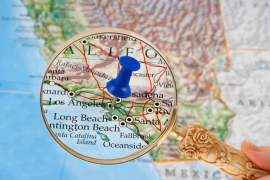
How to Get Backlinks 101: Basics for Law Firms

Backlinks are one of the best ways to differentiate yourself from your competition when it comes to search engine optimization. According to the most recent American Bar Association survey, there are over 1.2 million licensed attorneys in the United States. If you don't know what a backlink is or how to get backlinks, keep reading! You'll find seven rules that will help you become a backlinks pro in no time at all.
Backlink Rule #1: Backlinks are Different Today
Until 2012, the answer to how to get backlinks was very easy: you bought them, and you could buy them very cheaply. Many services existed that would charge you on a per backlink basis, and these services often charged extremely low rates even for thousands (or tens of thousands) of backlinks.
Today, many web marketing professionals are wishing they never bought those links. That's because new changes to Google have changed how to get backlinks that work. If you have paid-for backlinks or are obviously using the same text on many websites, Google will now consider your website “over optimized” and drop its rankings accordingly. Every backlink that those web marketing professionals paid for, they're now having to ask to be removed—a time consuming and tedious process that no one wants to have to do.
Instead, today's marketers want to focus on getting smaller numbers of better backlinks. By making sure every backlink you build is high quality, you'll be able to make your search engine optimization better without taking any unnecessary risks, like the risk of being seen as a spammer.
Backlink Rule #2: Variation is Key
Okay, so you learned how to get backlinks a few years ago, and you've now got a mess on your hands. All that identical anchor text that used to raise your search engine result pages (SERPs) is now detected as possible over optimization by Google Penguin. In order to avoid this problem, you need to learn how to get backlinks that have more variation.
Try mixing up your anchor text a little bit. Using the exact same backlink phrases over and over will make search engines see your backlinks as fake or low quality. Brainstorm some variations of your keywords and you'll have an easier time knowing how to get backlinks that won't get you blacklisted.
Backlink Rule #3: Tough Links are Better
While shortcuts like link buying used to predominate the backlink market, today, people know that you're more likely to have a high ranking website if you get the backlinks that are harder to get. Learning how to get backlinks from high quality websites is a little trickier than just buying links by the thousand, but you'll end up with much better results as well.
For example, let's say that you work very hard on press releases about some recent cases that your firm has taken on and won. These press releases, if they're circulated to the right media sources, could lead to a major news network like CNN talking about the cases or asking you for a quote. Backlinks from reputable media sources like this will be much better for your website than a backlink from a random blog that often has guest bloggers.
This isn't to say that you should turn down any linking opportunity that's easy. It just means that effort is worth it, and that Google has decided to reward the businesses who are putting the most effort, rather than the most money, into their backlinking efforts.
Backlink Rule #4: Work Your Connections
There's nothing wrong with leveraging your social networking connections for some backlinks. This is one of the most tried and true methods for how to get backlinks, especially for a new website that hasn't yet built up much of an online reputation or presence of any kind.
If you're using social media, make sure that you're posting regularly about the new website. You should have user friendly content that will draw people in and make them want to share your message without any prompting from you. If you're successful in creating this kind of content, you may not need much more advice about how to get backlinks—the backlinks will just come to you from your website visitors after a while.
Backlink Rule #5: Never Spam
The internet can sometimes seem like a vast and wild place where it's difficult to find the right answer to a question. Don't make it worse by putting up misleading backlinks or otherwise creating spam. Anyone who learned how to get backlinks in the earlier days of the web may have learned some bad techniques that led to spam creation. However, if you're learning now, there's no excuse—any guide that encourages spam-like techniques can be safely disregarded in the post-Penguin era.
Backlink Rule #6: If It Looks Too Good To Be True...
Beware of any services that say they know how to get backlinks for much cheaper than anywhere else. It's possible that they're still using the same kinds of methods that are getting webmasters in trouble today. These services are often not particularly ethical, and will try to obtain backlinks online wherever they can, regardless of whether the websites linking you have any relevant connection to your business.
Check the fine print, and ask to see other websites that the service has search engine optimized. If they'll only let you access case studies that came from before the Penguin update, you should find a new provider of backlink building services.
Backlink Rule #7: Audit Your Backlinks
Periodically, it's a good idea to check where your backlinks are coming from and whether they are of good quality. If you see a backlink that appears to be from a spam website or other type of negative SEO content, it's best to ask promptly for its removal so that you don't face consequences from Google or other search engines.
A backlink audit can be made much easier using free web tools. Google provides a number of these tools for free to users, as do a number of other websites, each offering different functions to help you decide which of your backlinks should stay and which should go.


















